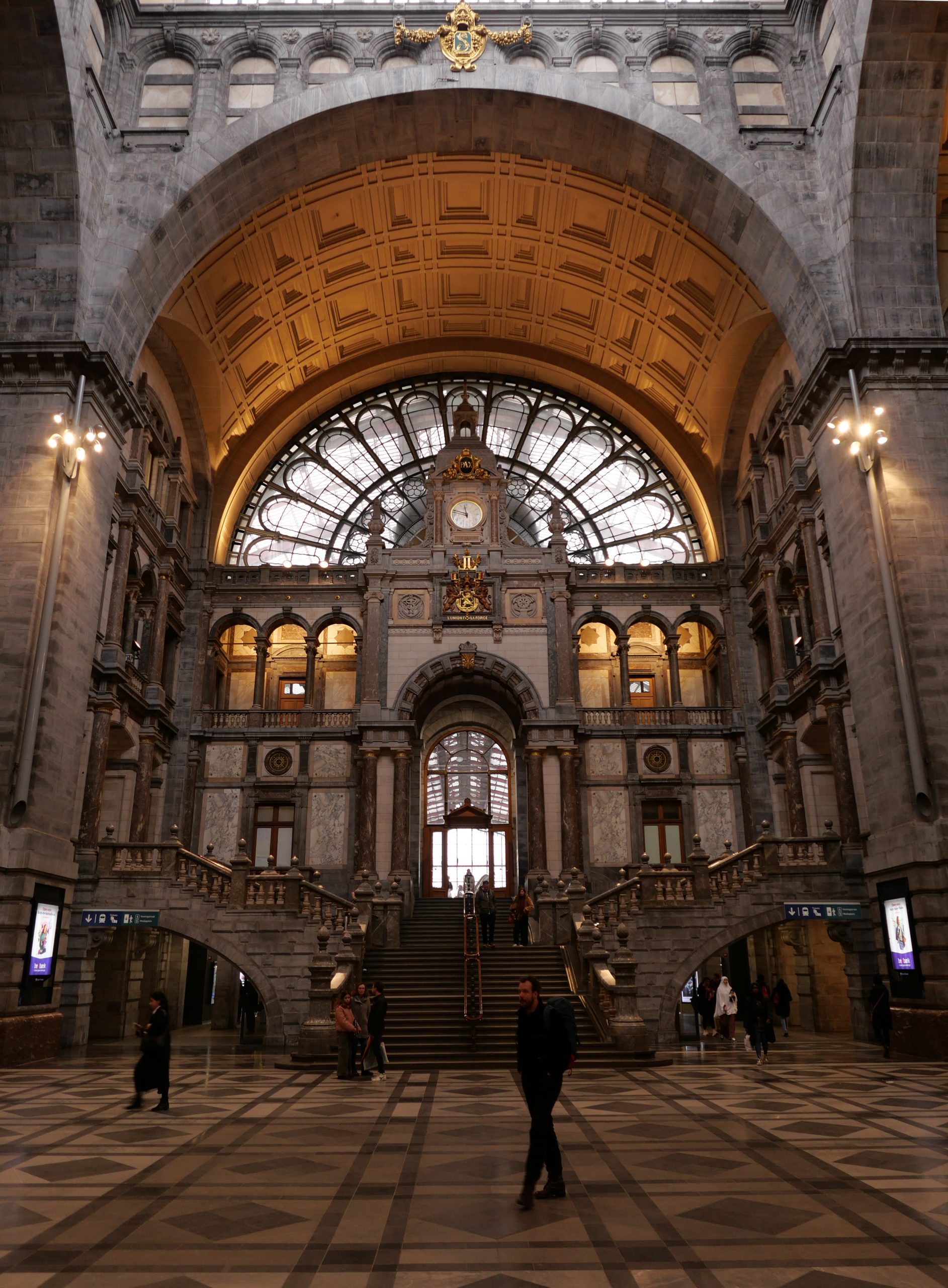On my first ever trip to Antwerp last week I made a literary pilgrimage to the Centraal Station to see one of the inspirations for W.G. Sebald’s novel Austerlitz. For Sebald, this ornate building, designed by Louis Delacenserie, and constructed between 1895 and 1905, displays an intense form of architectural eclecticism. The station’s elaborate interior serves as a cathedral to Belgium’s colonial past, a kind of architectural homage to “the deities of the nineteenth century – mining, industry, transport, trade and capital.” Standing in the entrance hall where Sebald’s protagonist Austerlitz once stood I reflect on the intricate coordination of space and time that underpinned the rise of European modernity. Spectral traces of violence have been transmuted into an edifice of marble and gold leaf, scarcely noticed by hurrying passengers. On the other side of the entrance hall there is a cavernous roof of steel and glass, its immense height built to accommodate steam trains. I order a coffee at le Royal café and wonder if Sebald might once have sat here making notes, listening to the swirling sounds of voices and trains.
